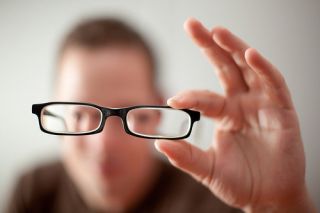 Early detection is key to preventing common eye problems in children and adults. Start by learning to identify the signs.
Early detection is key to preventing common eye problems in children and adults. Start by learning to identify the signs.
Good eyesight is precious. In Malaysia, 80 per cent of 18-year-olds are myopic, according to data
Myopia is just one of several common eye conditions that threatens the quality of sight in children and adults. Some conditions are minor and will go away eventually, while others may need specialist care. Left untreated, serious eye problems can lead to severe deterioration or a total loss of sight. Fortunately, many eye conditions can be treated and managed with early detection.
Here are six common eye conditions and their symptoms that you can look out for.
1. MYOPIA: WHEN YOU HAVE TROUBLE READING FROM AFAR
For the past 18 months, the COVID-19 pandemic has kept families largely indoors. Home-based learning and entertainment are now the norm, and with fewer opportunities to play outside, children are spending hours staring at their digital devices without a break. Dr Deborah Tan, a consultant at SNEC and a specialist in paediatric ophthalmology, adult strabismus, cataract and comprehensive ophthalmology, noticed the alarming trend over the course of the pandemic.
She shared: “Increased digital screen time and limited outdoor activities have been found to be associated with the onset and progression of myopia and could potentially be aggravated during and beyond the COVID-19 pandemic period.”
In Singapore, 7 per cent of five-year-olds in Singapore wear glasses but this figure rises to 60 per cent in Primary 6 students.
How do you know if your child is short-sighted? Children often do not realise that they have blurred vision, so it’s crucial for parents to be vigilant. If your child is holding a book close to his face or squinting to read a sign from afar, bring him to a doctor for an eye test.
Whether or not your child has myopia, it’s important to enforce healthy eye habits, such as minimising screen time, encouraging outdoor play and reading in a well-lit environment.
2: STRABISMUS: WHEN YOUR EYES ARE MISALIGNED
Do your child’s eyes appear to be looking in different directions? Strabismus is a condition whereby the eyes are misaligned. It can shift from one eye to the other, and may be intermittent or constant. It can happen at any age and is due to abnormal neuromuscular control of the eyes.
Left untreated, a squint can result in poor depth perception, and in a young child, may lead to development of “lazy eye”, also known as amblyopia. Amblyopia is poor vision in an eye that has not developed normal sight during early childhood.
Unless a child has an obviously misaligned eye or other conditions that can be easily seen, it may sometimes be difficult for parents to pick up strabismus or amblyopia. Dr Tan suggests looking out for tell-tale signs, such as a child squeezing the eyes, closing one eye to see clearly or frequently tilting the head to one side. Some children may bump into things on a particularly side or have poor overall depth perception.
The good news is that the chances of improvement in strabismus or a full recovery in amblyopia increases with early diagnosis and treatment, hence it’s important to take your child to an eye doctor during infancy or early childhood.
3. CATARACTS: WHEN YOUR VISION GETS CLOUDY
Is your vision cloudy, like you’re looking through a fogged window? You may be developing cataracts in one or both eyes. A cataract is the clouding of the normal crystalline lens of the eye and a common condition among seniors.
Some people with cataracts wonder why they had not spotted the signs early on but this is common because cataracts develop slowly and have little effect on vision at the start. However, with time, cataracts eventually interfere with even the simplest of day-to-day activities.
If you’re experiencing persistent blurred or dim vision, and suffer from glare, especially in bright light, these are signs that you should consult a doctor. Spectacles and stronger lighting when reading may help for a while, but without clinical treatment, cataracts will eventually disrupt your life. This is when cataract surgery can be transformative.
If the idea of eye surgery seems scary, Dr Jayant Venkatramani Iyer, a consultant at SNEC and a specialist in glaucoma, cataract and comprehensive ophthalmology, shared a reassuring statistic.
He said: “Cataract surgery is among the most performed surgeries worldwide and has a very high success rate – in excess of 97 per cent – in restoring good vision. The procedure is a day surgery and involves replacing the patient’s cloudy lens with an artificial lens implant.”
The procedure is the leading surgery performed at SNEC. If you suspect you have cataracts, make an appointment to get your eyes checked.
4. GLAUCOMA: WHEN YOUR VISION GROWS DARKER
Known as the “silent thief of sight”, glaucoma is a group of eye diseases caused by fluid pressure building up in the eyeball, leading to damage to the optic nerve. If ignored, glaucoma can have dire consequences.
Dr Iyer shared: “Glaucoma is one of the leading causes of irreversible blindness. Three to 4 per cent of adults over the age of 40 in Singapore suffer from the disease and many more are monitored with suspected glaucoma.”
There are two main forms of glaucoma – open angle and closed angle. In open angle glaucoma, patients usually experience a slow build-up of pressure in the eye. In closed-angle glaucoma, the pressure is often experienced suddenly. Both forms lead to optic nerve damage and eventual blindness.
If you’re over 60, are short-sighted or have a family history of glaucoma, you are at higher risk of contracting glaucoma. In Singapore, studies have shown that people of Chinese descent have a higher risk of closed-angle glaucoma.
Whether you’re a glaucoma sufferer or someone suspected of developing the disease, you must commit to regular check-ups with your eye doctor for life. The doctor may prescribe you eyedrops to lower your eye pressure to keep the disease under control and in some instances, laser or eye surgery may be required.
5. DIABETIC RETINOPATHY: WHEN HIGH BLOOD SUGAR LEVELS DAMAGE YOUR RETINA
In Singapore, an estimated 19,000 people are diagnosed with Type 1 or Type 2 diabetes every year. For these patients, diabetic retinopathy – a condition caused by high blood sugar levels damaging the retina, the layer of cells that senses light and sends signals to the brain – becomes a real risk. It is one of the main causes of vision loss among young and middle-aged adults.
Unfortunately, diabetic retinopathy displays no early symptoms and sight is often only affected when the condition is severe. In its later stages, people with the condition may suffer from blurry vision and face difficulties reading and driving.
Prevention is better than cure in the case of diabetic retinopathy. Dr Iyer explained: “Good control of diabetes reduces the risk of damage to the retina. In cases where the damage from diabetic retinopathy is severe, patients may opt for laser treatment to help preserve their vision. In some cases, surgery might be required.”
If you have diabetes, it is vital to have eye examinations conducted either by an ophthalmologist or through yearly retinal photographs as organised by primary care physicians every year. This increases your chances of getting diagnosed before the condition causes irreversible impact to your vision and quality of life.
6. AGE-RELATED MACULAR DEGENERATION: WHEN YOUR CENTRAL VISION IS IMPAIRED
As its name suggests, age-related macular degeneration (AMD) is an eye condition that can occur as people age. It is one of the leading causes of blindness in those above the age of 50.
Broadly, there two forms of AMD – dry AMD and wet AMD. The early stages of dry AMD have few symptoms and may result in gradual impairment of central vision. There is no known cure for this variation. However, vitamin formulations have shown to help reduce the risk of vision loss.
In wet AMD, abnormal blood vessels may bleed into the deeper layers of the retina, resulting in sudden central vision loss or impairment. Previously, vision loss from wet AMD was irreversible, but over the past decade or so, injections of certain medications have allowed many patients to regain part of their vision.
To spot the early signs of AMD, visit an optometrist or ophthalmologist for regular eye examinations. The doctor will suggest appropriate treatment and help you manage the disease in the long term.




Recent Comments